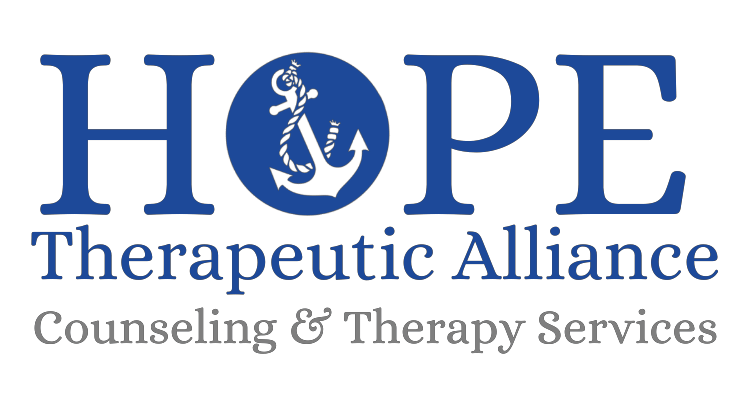
Cognitive Processing Therapy (CPT)
Cognitive Processing Therapy (CPT): Reframing the Story Trauma Tells
Understanding How CPT Helps You Reclaim Your Voice
Cognitive Processing Therapy, or CPT, is a structured form of talk therapy that helps people heal from trauma. When you experience something painful or life-changing, your mind naturally tries to make sense of it. But sometimes, the beliefs you form afterward, like “I should have done something different,” or “I can’t trust anyone anymore”, can get stuck and continue to cause distress long after the event has passed. CPT helps you understand how those thoughts are connected to your emotions and behaviors, and teaches you how to change the patterns that keep you feeling stuck.
The Heart of Cognitive Processing Therapy
Cognitive Processing Therapy (CPT) is an evidence-based trauma treatment that helps you understand how your thoughts about a traumatic experience affect your emotions, behaviors, and sense of self. When you go through something deeply distressing, your brain may form beliefs like “It was my fault,” or “I can’t trust anyone.” These beliefs can get stuck and continue to cause emotional pain long after the event has ended.
CPT helps you look at those beliefs from a new perspective. By examining how trauma has shaped the way you think, you can begin to release guilt, shame, anger, or fear, and start to reconnect with your life in a healthier, more balanced way.
A Step-by-Step Path Through the CPT Process
CPT follows a structured, step-by-step model that typically takes place over about 12 sessions. Each phase builds on the last, guiding you toward understanding, healing, and growth.
Phase 1: Education and Awareness
You’ll learn how trauma impacts your thoughts, emotions, and body, and how certain thinking patterns can keep you feeling stuck. This helps you recognize that your reactions are understandable — but also changeable.
Phase 2: Identifying Stuck Points
Together, we’ll identify “stuck points,” which are unhelpful or rigid beliefs that keep you trapped in painful emotions. Examples include “I should have done more,” or “I can’t be safe anymore.” Recognizing these is the first step toward changing them.
Phase 3: Challenging Unhelpful Thoughts
Once stuck points are identified, you’ll learn structured techniques to question and challenge them. We’ll look at evidence for and against these beliefs and begin replacing them with more realistic and compassionate perspectives.
Phase 4: Writing and Processing the Trauma Impact Statement
You’ll write about how the trauma has influenced your views of safety, trust, power, control, and self-worth. This helps you process what happened in a structured, supported way, not to relive the event, but to change how you understand it.
Phase 5: Developing New Beliefs and Integration
As your thinking becomes more balanced, we focus on strengthening new beliefs such as “I did the best I could,” or “I am strong and capable.” You’ll start noticing changes in how you feel, react, and connect with others.
Reconnecting with Yourself Through CPT
CPT is about reclaiming your narrative and your power. It helps you separate who you are from what happened to you. As you progress, you’ll find that your trauma no longer defines your identity or controls your emotions. You’ll be able to look at your past with greater compassion and move forward with a stronger sense of self, confidence, and peace.
How CPT Helps You Release the Past and Build Peace
CPT helps you look at the story your mind has been telling you about what happened and challenges the parts that aren’t fully true or fair to you. For example, if you blame yourself for something that wasn’t actually in your control, CPT helps you see the situation more accurately. As you work through this process, you learn to notice and shift the thoughts that trigger guilt, anger, fear, or shame. Over time, many people notice they feel lighter, more in control of their emotions, and better able to focus on the present instead of being pulled back into the past.
You’ll work with your therapist to identify the specific beliefs and “stuck points” that keep the trauma active in your mind. You’ll learn practical tools, both during and between sessions, to help you process memories in a healthier way and create space for self-compassion, balance, and forward movement.
Why CPT’s Structure Makes Healing Possible
CPT isn’t an open-ended or purely reflective type of therapy. It’s a focused, step-by-step approach that usually lasts about 12 sessions. Each session has a clear purpose, and you’ll be guided through writing and discussion exercises that help you explore your thoughts in a structured way. The goal is not to relive your trauma but to change how it lives within you.
This approach gives you specific skills you can use outside of therapy, tools for recognizing when your mind is going back to old patterns, and for re-centering yourself in the present. CPT is active, practical, and collaborative. You and your therapist work together to understand your experiences and reshape the way you interpret them.
Is Cognitive Processing Therapy Right for You?
CPT might be right for you if:
You’ve experienced trauma that still affects how you think, feel, or relate to others.
You often find yourself feeling guilty, angry, ashamed, or on edge about what happened.
You’re ready to learn new skills and want a more structured, goal-oriented therapy process.
Have the ability to attend 12 weekly sessions AND complete the required take-home work.
You want to understand your thoughts better and feel more in control of your emotions and decisions.
If you’ve been feeling like your trauma still defines how you see yourself or your world, CPT can help you find clarity, healing, and confidence. It’s about helping you rebuild the way you understand your experiences, so your past no longer has the power to shape your future.


